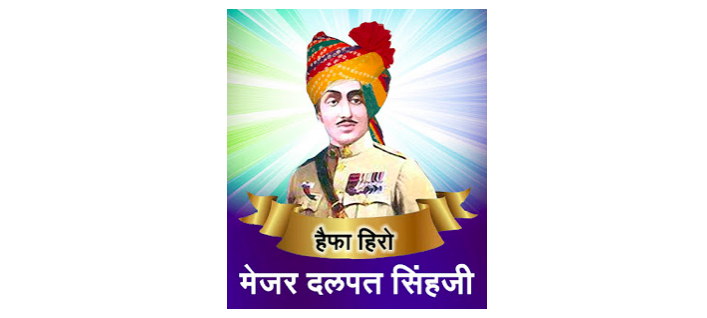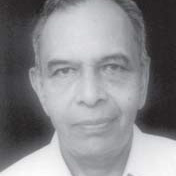Major Thakur Dalpat Singh was born and brought up in Jodhpur, the cradle of heroes. He was the only child of his parents. His father, Col Hari Singh Shekhawat was a jagirdar and a well-known polo player, who guided and encouraged his son to join the army. Sir Pratap Singh, the ruler of Jodhpur State sent Dalpat Singh to UK for education. At the age of 18, he joined Jodhpur Cavalry as a soldier and later rose to the rank of Major. Units of the Indian Army had taken part in World War I, and had displayed courage and outstanding gallantry. The 5th Cavalry Division deployed in Palestine comprised one British Cavalry Brigade and two cavalry brigades of the British Indian Army. The 15th (Imperial Service) Cavalry Brigade comprising three cavalry regiments from the princely states of Jodhpur, Mysore and Hyderabad were part of 5th Cavalry Division. The 5th Cavalry Division was part of the Egyptian Expeditionary Force organised by the British Government to ensure safety of the Suez Canal. The Turkish Army had been pushed back by the Egyptian Expeditionary Force and they had occupied a defensive position at Haifa. An air reconnaissance on 22 September 1918 indicated that Haifa had been evacuated by the Turkish Army. This was found to be false, and advance to Haifa was stopped by accurate machine gun and artillery fire. The strong position could not be outflanked. The roads leading to the port were narrow tracks and Haifa had to be captured to ensure landing of supplies for further advance. The Prime Minister of UK had desired to offer Palestine as a New Year gift to the public.
The task of taking Haifa was allotted to the 15th Cavalry Brigade. It was considered that Hyderabad Lancers staffed by Muslims may be reluctant to fight against the Turks and had been moved to escort 12000 prisoners to Kerkur. Earlier also, Kitchener diverted a Muslim prominent unit to Africa.
The Mysore Lancers advanced along the Acre railway line, climbed a steep hill side and silenced two guns and two machine guns. Armed with swords and lances, the Jodhpur Lancers charged the enemy position. The Mysore Lancers who had been giving fire support followed them. They captured 1350 Turkish and German prisoners, including two German and 35 Ottoman officers. A large number of artillery guns fell into their hands. Jodhpur Lancers lost eight soldiers and 60 horses. Major Dalpat Singh attained martyrdom and Captain Amar Singh took over the command.
Haifa was liberated after 450 years of Ottoman rule. Major Dalpat Singh was awarded the Mahavir Chakra posthumously. Col Harvey of British Army lamented the death of Dalpat Singh, a great hero of the British Empire. His valour is recited in the literature of Rajasthan. The British Government installed his statue with two other heroes in 1922 and a memorial was built in his name at Pratap School, Jodhpur by the Government of Marwar. Jodhpur Lancers and Mysore Lancers were formed into 61 Cavalry. The Haifa Municipality has introduced stories of their valour in school text books. The Teen Murti statues in New Delhi represent the three Lancers.
During his recent visit to Israel, Prime Minister Narendra Modi visited the Haifa cemetery and saluted the Indian soldiers who had laid down their lives to liberate Haifa and called their sacrifice a great bond between the two nations. He also unveiled a plaque commemorating Major Dalpat Singh, the hero of Haifa. At 6.30 p.m. on 19 July 2018, a commemorative meeting was held in the House of Lords in UK. The Battle of Haifa was unique and could have ended in a disaster, but it turned out to be a great success. Entry for Indians into the Sandhurst Academy for a commission was an outcome of this battle.
After so many years, Dalpat Singh is still remembered by the people of Ajmer with great respect for his outstanding bravery.


 [/column]
[/column]